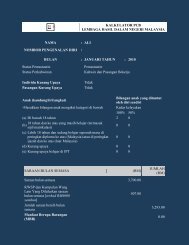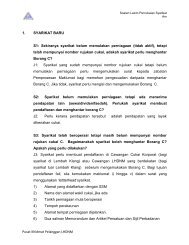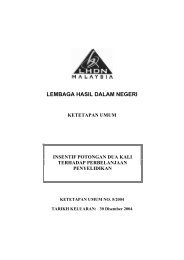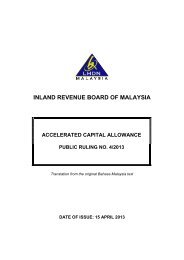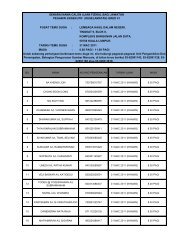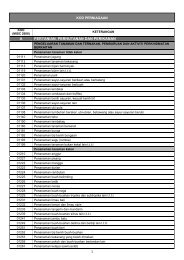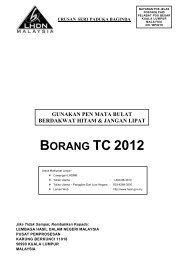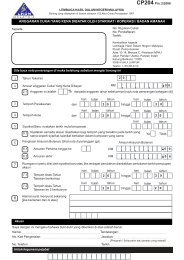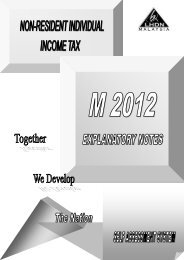Tan Sri Mohd Sidek Hassan
Tan Sri Mohd Sidek Hassan
Tan Sri Mohd Sidek Hassan
- No tags were found...
You also want an ePaper? Increase the reach of your titles
YUMPU automatically turns print PDFs into web optimized ePapers that Google loves.
<strong>Tan</strong> <strong>Sri</strong> Abdul Rahman MamatASEAN is fast emerging as a significant economic entity for tworeasons: global suppliers find it an increasingly attractive productionbase while investors are lured by its consumer market of half abillion people. Many business opportunities are being created as thistransformation takes place, but few Malaysian companies appear to betaking advantage of it. Should this continue, the initiative may well passon to their more enterprising neighbours.The formation of Asean in the late 60s was motivated primarily by political andsecurity reasons. But today, the pace and direction of its development is dictatedlargely by economics, by how countries respond to the fast-changing pattern ofworld trade and cross-border investment.Over the last 10 years, Asean economicregionalism has taken on a new urgency.The 1997-98 Asian financial crisis showedthat the economies of South-East Asiawere more closely related than previouslythought, and it made sense for them toseek to increase intra-regional trade andrely less on exports markets in the UnitedStates and Europe.Two other factors accelerated the drivetowards greater Asean economicconsciousness. Asean countries foundthat they had to compete against regionaltrading blocs like the North American FreeTrade Area and the European Union forforeign direct investment.They were also in dangerof losing out to theemerging economicbehemoths of Chinaand India as low-costproducers. Unless theygot their acts together,Asean countries weregoing to lose out in thebattle for investment.They were also in danger of losing out to the emerging economic behemoths ofChina and India as low-cost producers. Unless they got their acts together, Aseancountries were going to lose out in the battle for investment.As Asean entered the new millennium, the strategic direction it had to adoptbecame clear.First, a stronger, integrated and more competitive Asean was seen as necessaryto overcome the preferential treatment some other countries receive.And second, Asean had to sustain economic growth and raise per capita incometo transform itself into an attractive consumer market of half a billion people. Thiswould entice producers to locate their operations in the region.65



